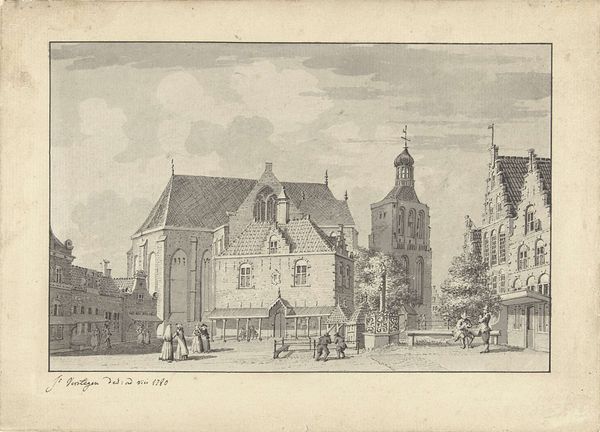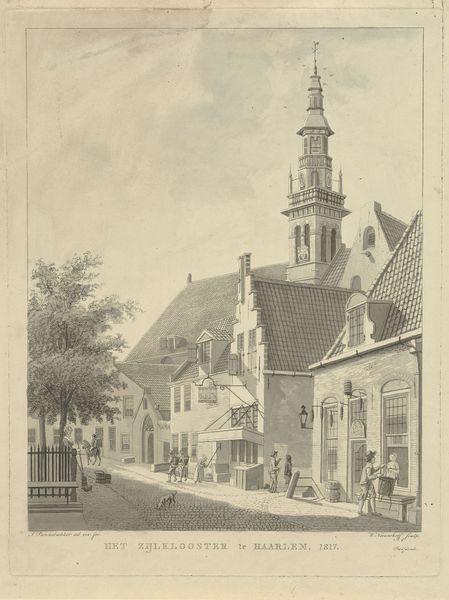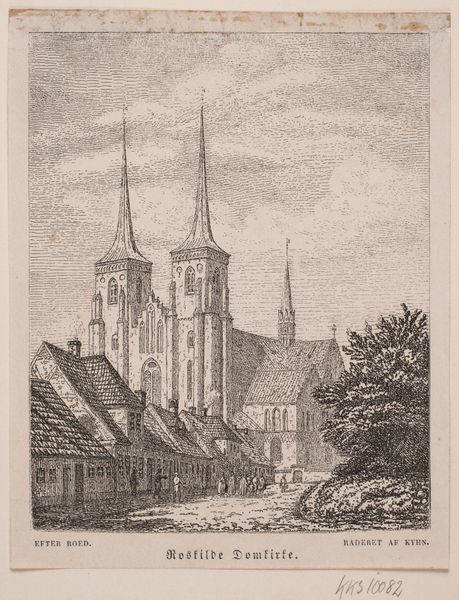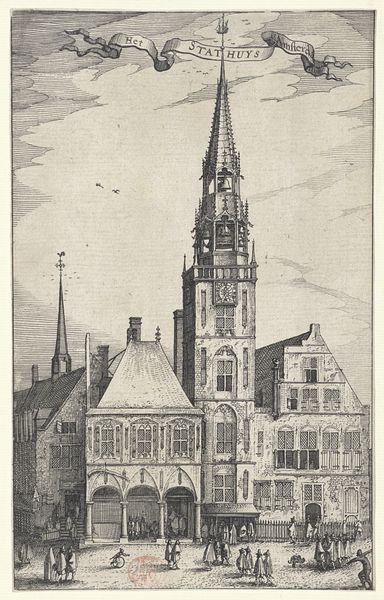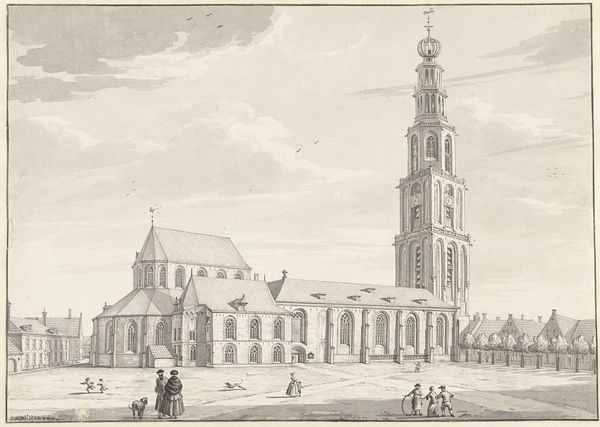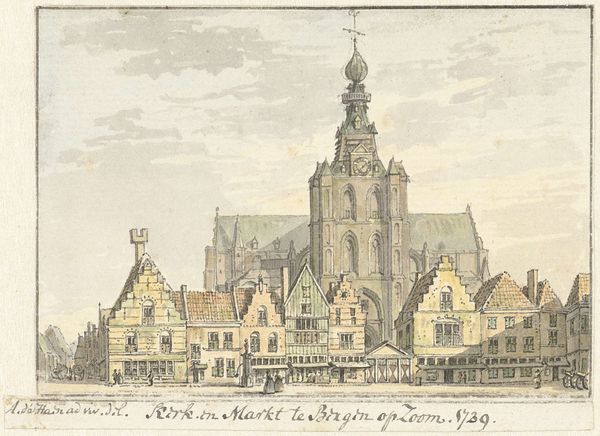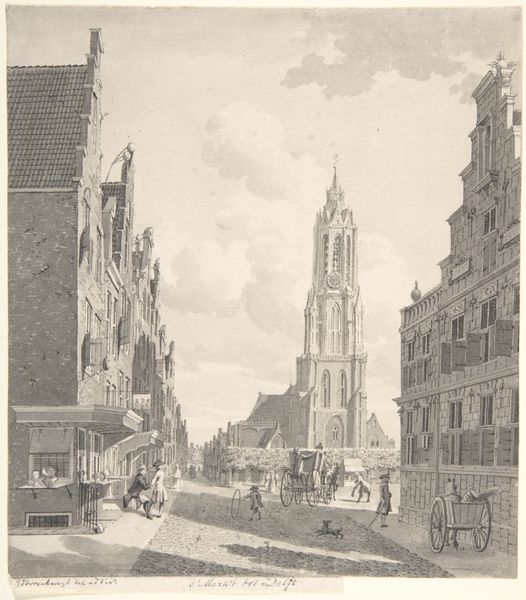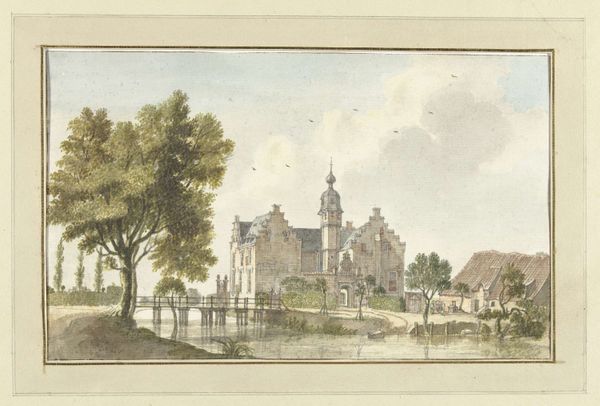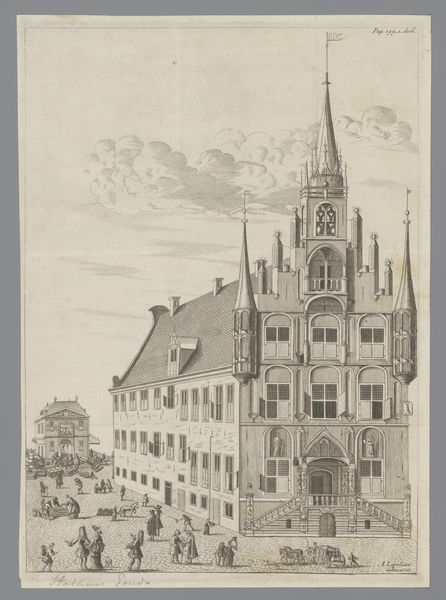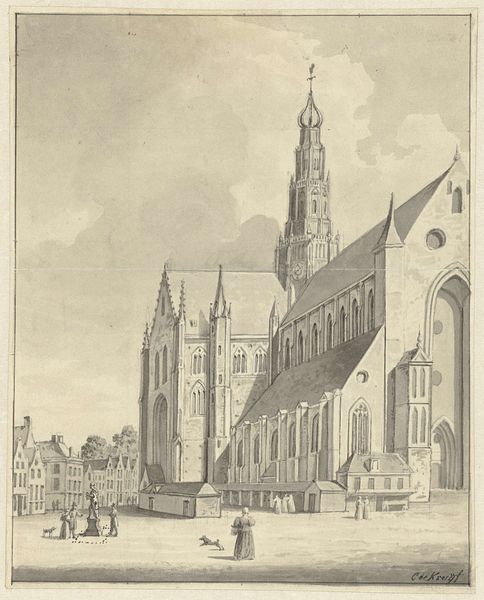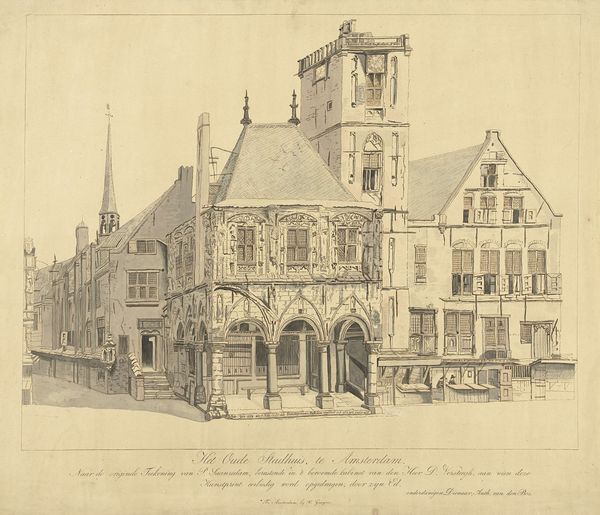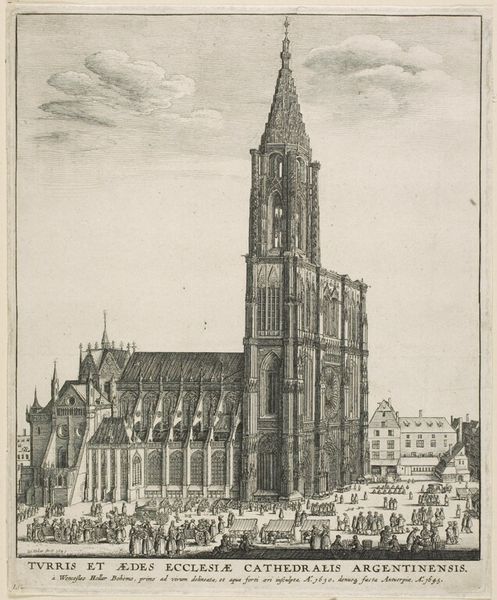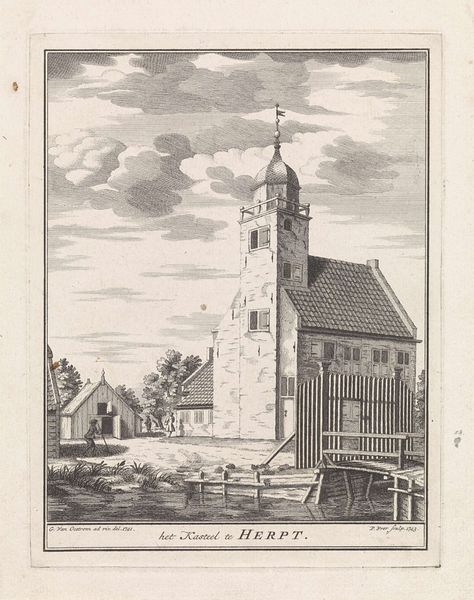
drawing, paper, ink, pencil, architecture
#
architectural sketch
#
drawing
#
aged paper
#
toned paper
#
light pencil work
#
quirky sketch
#
baroque
#
dutch-golden-age
#
pencil sketch
#
sketch book
#
landscape
#
paper
#
personal sketchbook
#
ink
#
pen-ink sketch
#
pencil
#
sketchbook drawing
#
cityscape
#
architecture
Dimensions: height 266 mm, width 192 mm
Copyright: Rijks Museum: Open Domain
Editor: This is Jan Ekels' "De kerk te Buren," from 1728. It looks to be primarily done in pen and ink and pencil on paper. It's aged beautifully, with the paper giving off this gorgeous, warm tone. What draws my eye is the level of detail used to render the church versus the very basic figures in the foreground. How do you see this drawing? Curator: I notice the prominent rendering of architecture set against those figures. Ekels emphasizes the constructed, permanent nature of the church as a physical building but seemingly neglects the ephemeral human presence nearby. We must think about who commissioned works like this and their relationship to labor. Editor: What do you mean about labor? Curator: Consider the social context: who benefits from portraying grand structures, and who carries the actual weight in constructing and maintaining these spaces? Is Ekels commenting on social stratification in Dutch society here? The meticulous detail in the church versus the sketchiness of the figures—is that a deliberate choice to elevate the institution over the individual? Editor: So, the rough treatment of the human figures isn't a lack of skill, but a conscious decision rooted in social commentary? Curator: Exactly! Ekels uses the drawing materials - ink and paper - to underscore a visual hierarchy that was inherent to Dutch society at that time. It is, in essence, the "material" inequality becoming apparent in art, through Ekels’ labor and craftsmanship. Editor: I never thought about the "means of representation" that way before. Now I'm wondering how labor plays a role in other pieces of art! Curator: Thinking about art through production methods and social contexts helps us see how even simple materials contribute to grand, complex narratives.
Comments
No comments
Be the first to comment and join the conversation on the ultimate creative platform.
